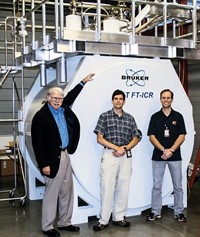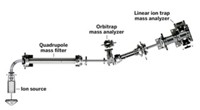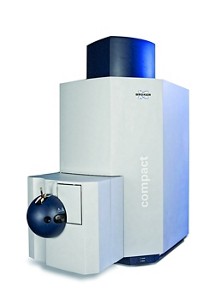Advertisement
Grab your lab coat. Let's get started
Welcome!
Welcome!
Create an account below to get 6 C&EN articles per month, receive newsletters and more - all free.
It seems this is your first time logging in online. Please enter the following information to continue.
As an ACS member you automatically get access to this site. All we need is few more details to create your reading experience.
Not you? Sign in with a different account.
Not you? Sign in with a different account.
ERROR 1
ERROR 1
ERROR 2
ERROR 2
ERROR 2
ERROR 2
ERROR 2
Password and Confirm password must match.
If you have an ACS member number, please enter it here so we can link this account to your membership. (optional)
ERROR 2
ACS values your privacy. By submitting your information, you are gaining access to C&EN and subscribing to our weekly newsletter. We use the information you provide to make your reading experience better, and we will never sell your data to third party members.
Analytical Chemistry
Inside Instrumentation
Technology and Business News for the Laboratory World
by Celia H. Arnaud and Ann M. Thayer
February 13, 2006
| A version of this story appeared in
Volume 84, Issue 7
PerkinElmer names new unit president
PerkinElmer has named Robert F. Friel, 50, president of its Life & Analytical Sciences (LAS) unit. He replaces Peter B. Coggins, 57, who retired this month. The LAS business has annual sales of $1.1 billion and now accounts for 74% of the company's total revenues. The LAS business serves the genetic screening, biopharmaceutical, and analytical sciences markets. Friel will continue to serve as vice chairman of PerkinElmer, a role he took on as of Jan. 1.
Smaller ICP debuts
Thermo Electron has unveiled its new iCAP 6000 series inductively coupled plasma (ICP) spectrometers, including the smallest ICP emission spectrometers on the market. A distributed purge system offers improved performance for arsenic, antimony, selenium, and tellurium. The instrument's door opens wide enough for unrestricted access to both the sample compartment and the pump. The iCAP 6300 is intended for routine analysis, whereas the iCAP 6500 provides greater flexibility for research applications. These instruments are geared toward elemental analysis in the environmental, petrochemical, metal, food and beverage, geochemical, and cement industries.
Symyx offers drug development tool
Symyx Technologies is offering a forced-degradation (FD) system for pharmaceutical development. FD involves subjecting drug compounds to extreme chemical and environmental conditions to determine product breakdown levels and preliminary degradation kinetics and to identify degradation species. Symyx's FD system uses integrated robotics and software to automate the parallel testing of compounds in preclinical development. Symyx says the system ensures consistent preparation, storage, and handling of samples and will increase throughput by 500% compared with manual methods.
Beckman debuts RNA workstation
Beckman Coulter has introduced the Biomek 3000-ArrayPLEX Workstation. The automated workstation processes up to 96 RNA samples in a single run for preparing gene expression arrays. It works with a variety of chemistries and chips and can also carry out other processes involving nucleic acid preparation. "The process of target prep for gene expression analysis is time-consuming and labor-intensive," explains David Daniels, applications marketing manager at Beckman Coulter. "We have been able to optimize our automation technology for this advanced solution."
Centice in sensor deals with firms
Centice, a two-year-old company developing optical-sensor technology that originated at Duke University, now has agreements with two instrument suppliers. Ocean Optics will cobrand and distribute a Raman spectrometer based on Centice's multimodal multiplex spectroscopy (MMS) technology. MMS uses a wide-area aperture, instead of a conventional pinhole or slit, to sample and mathematically process up to 500 measurement channels at once for better signal-to-noise performance. Separately, Newport Corp. will use the MMS technology in a new spectrometer platform. The first product will be a fully integrated, compact UV-Vis system available in a 190- to 500-nm spectral range with 0.6-nm resolution.
Bio-Rad releases IR databases
The informatics division of Bio-Rad has released 19 new infrared spectral databases, bringing Bio-Rad's total collection to more than 95 stand-alone IR databases. This information is used for verifying, classifying, and identifying chemical substances in a range of areas. In addition to databases related to specific classes of chemical compounds, Bio-Rad is offering hazmat and explosive materials databases.
Agilent updates LC and MS systems
Agilent Technologies has launched the 1200 Series LC line and the 6000 Series MS line. The 1200 is the successor to Agilent's 1100 series. To "protect customer investments," Agilent has made the 1200 reverse-compatible with the 1100. The new system consists of more than 60 instrument modules, which can be configured for LC applications from preparative-scale all the way to chip-based. Agilent offers more than 900 columns for the 1200, with a range of diameters, lengths, and particle sizes. The 1200 Rapid Resolution system provides faster analysis times and improved resolution relative to the previous system without significantly increasing the system pressure. In the MS arena, the 6000 series features five instrument classes, including single quadrupole, ion trap, time-of-flight (TOF), triple quadrupole, and a tandem quadrupole-TOF. The single-quad, ion trap, and TOF instruments are updates of previous Agilent offerings, whereas the triple quad and Q-TOF represent Agilent's first foray into those markets. Agilent hopes to double its share of the fast-growing MS market by 2008.








Join the conversation
Contact the reporter
Submit a Letter to the Editor for publication
Engage with us on Twitter